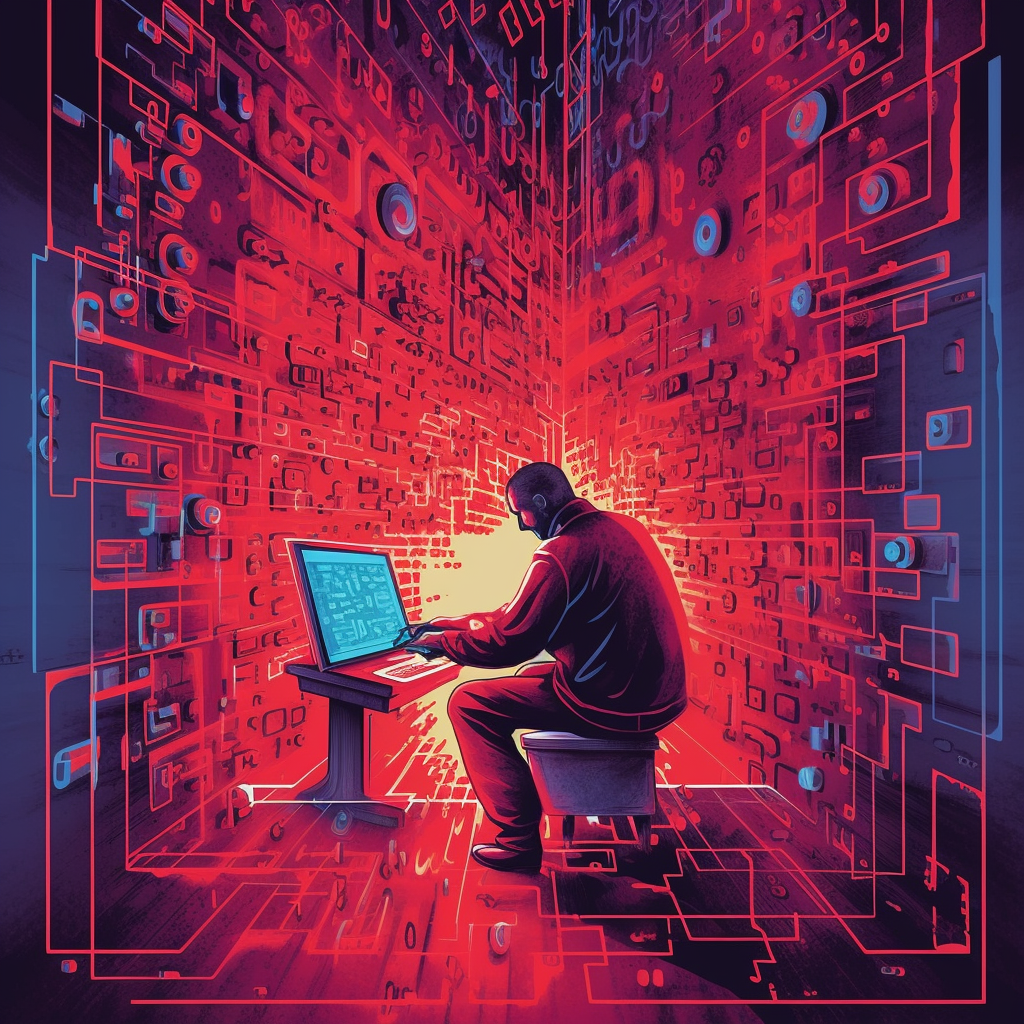11 min read

The world has fundamentally changed in the past few decades. The rise of knowledge work and complex digital systems has shifted how we operate and compete. The practices needed to manage these new ways of working are different. Past success does not guarantee future success. Clinging to past mastery can hinder progress. Whether through bottom-up or top-down approaches, it is widely observed that the success of your transformation greatly depends on having a sponsor who comprehends it at the highest level possible. Ultimately, an organization’s success or failure depends on how much effort those with the most power put into learning the practical models they have chosen to use. This article targets digital delivery and operations leaders.
“We shape our buildings, and afterward, our buildings shape us.” Similarly, we shape the architecture of our organizations (how they are wired), which then shapes the behavior of the people within them.”
Winston Churchill
I am thrilled to witness a growing number of organizations within the Agile, Lean, and DevOps global IT and software delivery communities making remarkable progress in culture, successful delivery practices, and overall advancement. However, it is disheartening to observe the prevalence of negative leadership stories and discussions among older, more experienced leaders, which hinder the transition from the previous era of large projects, function-based teams, handoffs, and waterfall methodologies to the modern practices we embrace today. This friction impacts the transformation of work and the realization of its potential.
What problem are we attempting to solve?
The negative impact of leaders who adhere to obsolete practices and metrics on contemporary agile work methodologies is apparent. Leaders who have previously achieved success are encountering challenges in obtaining a profound comprehension or achieving success in the constantly evolving realm of digital delivery practices.
Outdated models and a lack of understanding of leadership can lead to conflicts and unsuccessful change attempts. To drive this change, new or current executives need to clearly understand modern practices and operations and the rationale for change to take charge. These individuals must also have the authority to implement the required transformations.
Friction from Giants
Senior leaders who cling to outdated practices and metrics often create friction within their organizations, particularly when their decisions, based on legacy knowledge and amplified by their rank, undermine progress and innovation. While assuming positive intent, these leaders must recognize that their reliance on antiquated expertise is causing friction and hindering collective efforts. Leaders must invest time in acquiring new skills and applying modern methods to achieve positive outcomes. It is crucial for individuals to distinguish between purpose, outcomes, and alignment and to recognize the disruptive consequences that arise from prioritizing outdated metrics and egos. As seasoned professionals in their respective domains, these leaders must enhance their performance and grasp the strategies and metrics their teams utilize.
Consider this a belated follow-up to my article from December 2021, titled “Established Organizations, Digital Literacy, Mindset, and the 4th Industrial Revolution.”
Digging in
The shift in senior leadership mindsets from traditional, pre-agile methodologies to modern practices like Agile, Lean, and DevOps must be addressed in the evolving landscape of software development and organizational management. This resistance, especially among senior leaders familiar with legacy systems, stems from a deeply rooted adherence to outdated metrics and methods. It’s a scenario that poses challenges for digital transformation and threatens the fabric of collaborative, cross-functional teams. It is astonishing how many individuals continue to encounter this issue.
Failed agile transformations are often traced to misalignment and senior leadership friction. I have personally encountered this challenge. Once, we had a senior stakeholder who championed new ways of working and challenged the incumbent mindset. However, when that leader retired, the responsibility fell on me and our teams. Without my knowledge, a series of discussions awaited me after his departure, along with the integration of new owners and C-level team members with traditional success mindsets and limited familiarity with agile practices and organizational team structure.
Why Leadership Adaptation Matters
Coming from a background of successful leadership in the software delivery realm, I unintentionally encountered challenges when embracing agility during our digital transformation. However, November 2018 marked a turning point in my career. Then, I realized the need to revise the strategies that had previously led to my success to align with new practices, methodologies, models, and cultures. It was time for a shift in my understanding and approach. I needed to unlearn, relearn, and rethink my understanding.
In recent years, the impact of entrenched mindsets on modern practices has emerged as a prominent focus in my writing, conference presentations, and personal and executive discussions.
Personal Struggles with Resistance
From my experience, confronting resistance from new C-Level team members, board members, and other executives who may need more experience or knowledge in agile, lean, and DevOps principles can be daunting. The risk of job security is a significant concern, as it could impede the progress of transformative efforts. Striking the right balance between advocating for change and navigating the complexities of organizational power dynamics is crucial.
Leadership Challenges: Four Real-World Conversations
I am presenting four instances of conversations with individuals who have contacted me, expressing their challenges with senior leadership and adjusting to change.
Case One: Transforming the Top
Most recently, a colleague in my network who works for a large telecom organization reached out to me, sharing their struggles, which align closely with the challenges I have been discussing in my talks on legacy senior mindsets, team structures and roles, productivity metrics, and the recent hurdles I have encountered.
I recently gave two talks at conferences about my organization’s digital transformation, sharing insights from my career journey and experience with metrics. I recounted my challenges when new C-level executives and board members pressured me to measure “productivity units” from my engineering team. These expectations were similar to what my Sales, Marketing, and Customer Support counterparts were delivering. I have shared our journey from focusing solely on individual output to prioritizing team productivity, impact, and outcomes. The effectiveness of software engineers can vary depending on their roles within teams. Engineers on small cross-functional teams must recognize that the responsibility for delivering software lies with the entire team, not just individual members. While writing code is an important task, engineers on these teams have a broader range of responsibilities. The recent introduction of Value Stream Management and Flow Metrics has played a critical role in facilitating discussions and driving changes in metric expectations that focus on team productivity.
“Hi, Phil! I encounter similar challenges with upper-level management, who resist discussing new ideas and suggestions for improving our processes. The prevailing status quo overwhelms and stresses my colleagues. I actively seek connections with enlightened stakeholders to join an initiative fostering constructive discussions, but it remains an uphill battle. I observe a reluctance to speak up and voice our concerns, and maintaining a proactive and adaptable mindset while practicing patience is crucial. I derive this insight from your own experiences as well. How did you handle resistance from senior leadership during this transition? And did you use roles like agile coaches or value stream managers to help you?”
My response was, “Handling resistance was no walk in the park. I often stood alone against new C-Level team members and board members. The key was to confront challenges logically and professionally. I relied heavily on my ability to present compelling examples and a clear vision of the desired outcomes based on the models and measures that properly match the practices. If you can, it’s crucial to stay proactive and adaptable. Find those enlightened stakeholders; their support can be a game-changer.”
This conversation highlights the difficulties of leadership during times of organizational change. It underscores the significance of being resilient, thinking strategically, and having the courage to advocate for change, even when facing opposition from top management, who may require more comprehension or be hesitant to adopt new approaches.
Case Two: Purpose over Process
I spoke with an experienced leader in agile transformation at a well-known global beverage company. During our conversation, we discussed our experiences with digital transformation. She shared a challenge she encountered with a senior leader who became frustrated with their agile transformation and the use of Scrum for software delivery. To address this, the leader switched their approach to Kanban, focusing more on tools to overcome the obstacles hindering their shift to agile delivery methods rather than dwelling on the reasons behind the struggle.
“Thank you once again for your time yesterday. I hope it’s all right if I email you now while it’s still fresh in my mind. During our conversation, you mentioned that you were a few years into the transformation when you faced a major disruption. You also mentioned that most, if not all, teams start with Scrum before transitioning to a version of Kanban. I would like to know how long your teams typically use Scrum before transitioning. Additionally, I’m interested in learning about the deciding factors for the transition to Kanban, especially if they vary. Most importantly, we also discussed some leaders’ challenges in embracing agile and letting go of command and control. I would appreciate any recommendations or resources you may have to help bring them along.”
The executive leader’s challenges in adopting Agile stem from focusing on tools rather than addressing underlying issues. A better understanding of Agile principles is necessary. They should explore the root causes behind the struggles with Scrum, uncertainties in transitioning, and the difficulty of shifting away from a command-and-control mindset. Furthermore, effective navigation of these obstacles requires more leadership support and education.
Case Three: Beyond Misconceptions
In 2020, a Scrum Master shared her experience working at a prominent for-profit educational institution that adopted SAFe as their guiding framework. There was friction coming from the CIO who was driving the initiative. She recounted instances where team members were reassigned to new roles without adequate training, resulting in their struggles to embrace agility. The most surprising aspect of our conversations was when she disclosed that the CIO attributed a failing or struggling transformation to a lack of understanding of the developer role among all team members. Instead of investing in targeted training for each team role, he mandated everyone attend a several-week coding boot camp. Even a product owner in her 60s was forced to learn coding instead of being offered additional training for her particular role. This training was expensive in cost and time.
The CIO believed that a need for more understanding of the developer role among team members caused the struggling transformation. However, this reflects a narrow interpretation of agility. Agile transformations are not just about technical skills or specific roles. They are about embracing collaboration, continuous improvement, and customer-centricity. The CIO’s misunderstanding of the Agile mindset, inadequate role-specific training, one-size-fits-all approach, neglect of the human aspect of transformation, resource misallocation, and lack of Agile leadership all contributed to the failure of the Agile transformation in this scenario.
This ineffective approach hinders progress by excessively focusing on tools and roles, disconnecting from the true essence of agility. Led by an authoritative leader and an unconventional version of Scrum, it demonstrates a lack of respect for team members. Unfortunately, this behavior is observed in many leaders within larger organizations.
Case Four: Productivity Fallacy
The recent McKenzie article on measuring developer performance, released in August, has ignited a heated debate. It raises concerns that senior leaders, who may need more familiarity and experience with modern delivery practices, must be more discerning when interpreting this article. The emphasis on individual metrics aligns differently with a team-oriented, outcome-driven approach. An interesting point is that the McKenzie article was published about a week after I submitted my first two summer talks on team productivity over individual output focus, as referenced in the abovementioned example.
Recently, I experienced an organization undergoing valuation efforts to secure next-level funding or attract investment through acquisition from a larger organization. As part of the valuation, the investors mandated a Sema code scan (from the Sema website: Serving CTOs, CIOs, and other Senior Engineering leaders, plus the C-Suite and Boards of Directors, with comprehensive codebase metrics).
The main concern was how assessors perceived the team’s capability and productivity. The analysis focused on identifying key team members based on code commits. This data only considers coding contributions. The list of “top developers” or valuable team members, as perceived by the investor, was inaccurate. Several crucial team members essential to the organization were ranked outside the top 10. I have been discussing the impact of evaluating performance solely based on code commits and similar metrics over the past few years. Today, cross-functional teams deliver solutions, not individual developers. The key is team productivity and outcomes over individual output.
When businesses are presented with metrics, they are often misused, with a tendency to prioritize individual performance over team results. This poses a risk as team members may prioritize actions that boost their numbers rather than focusing on team outcomes and overall improvements. Consequently, this can lead to subpar output being delivered.
If your organization still operates in functional groups, it may be acceptable. However, focusing more on metrics related to the system, flow of work, and team performance is essential. Acknowledging that developers contribute through code commits and mentoring, collaboration, design, architecture, and problem-solving discussions is crucial. In today’s cross-functional agile teams, developers have broader responsibilities beyond just writing code. In such cases, the team collectively delivers software and value rather than individual contributions.
Understanding the Legacy Leaders’ Dilemma
Experienced leaders occupying critical senior leadership, executive, and board roles have succeeded and found solace in traditional methods (refer to the supplement at the end of this article for a detailed explanation of these traditional methods). Familiar with their mastered ways of working, they need assistance navigating the paradigm shift brought by Agile and DevOps. Their resistance is not just a matter of preference but is deeply intertwined with ego, vulnerability (they are supposed to be the experts), and a fear of the unknown. This reluctance to embrace change becomes a significant roadblock in the journey toward digital transformation.
The Detrimental Impact of Legacy Metrics
Much of my experience and conversations surface the demand to use legacy metrics that do not fit team-based practices and models. The insistence on using metrics that focus on individual productivity, tailored for past practices, has a cascading negative effect on modern teams:
- Eroding Team Dynamics: Modern roles like software engineers in cross-functional teams rely on collaboration. Evaluating individuals based on outdated productivity metrics undermines this collective effort.
- Misaligned Incentives: Old metrics create misaligned incentives, leading to a competitive atmosphere that damages morale and team spirit.
- Stifling Innovation: Focusing on narrow, output-focused metrics discourages experimentation and adaptability, hindering personal growth and team innovation.
- Inaccurate Assessment: Roles crucial in enabling the team, like agile coaches or value stream managers, are undervalued as their contributions don’t fit traditional productivity metrics.
- Resistance to Change: Using outdated metrics fuels resistance, creating friction and potentially derailing transformation efforts.
- Impeding Talent Retention: Adherence to outdated metrics makes an organization less attractive, potentially leading to losing talent who seek dynamic and collaborative work environments.
The Humbling Journey of Adaptation
Adapting to new methods requires leaders to embark on a humbling journey of unlearning and relearning. It’s a process that can bruise egos but is essential for growth and development. This adaptation is about acquiring new skills and reshaping one’s understanding of leadership and success.
The Crucial Role of Senior Stakeholder Commitment
Unsuccessful Agile transformations often highlight the importance of more substantial commitment from senior stakeholders in fostering emerging knowledge and skills. This lack of alignment not only slows down progress but also creates unnecessary friction within the organization.
Conclusion
Without enlightened leadership at the top, there is little hope for change. The cases in this article are just a small example of dysfunctional leadership and a misinterpretation of agile principles. It’s challenging to feel like we’re progressing or improving the situation under such leadership.
Adapting to change can be challenging, especially when legacy senior leaders create friction in modern digital transformation practices. It’s surprising how often this conversation comes up, even after over a decade of digital transformation. The fact that these conversations still happen today highlights the importance of continuous learning and the crucial role of professionals in guiding this transition.
For a transformation to succeed, leaders must be willing to evolve and embrace new paradigms while letting go of outdated practices. Thriving in this dynamic landscape requires committed and adaptable leadership eager to acquire new knowledge and support transformative efforts from the top down. Only then can we fully unleash the true potential of Agile, Lean, and DevOps practices.
Poking Holes
I invite your perspective on my posts. What are your thoughts?.
Let’s talk: [email protected]








